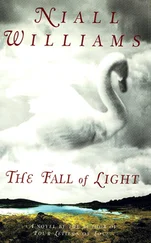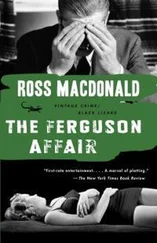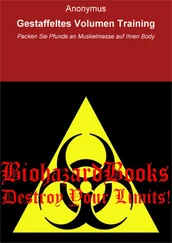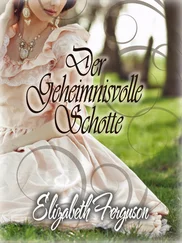First referred to in the eleventh century, Fürth alternately prospered then suffered from the fragmentation of political authority in medieval and early modern Germany. For a time, sovereignty over the town was shared between the bishop of Bamberg and the margrave of Ansbach. But such loose arrangements exposed the town to devastation during the Thirty Years’ War that ravaged Germany during the first half of the seventeenth century. (Not far southwest of Fürth is the Alte Veste, where Albrecht von Wallenstein defeated the Swedish king Gustavus Adolphus in 1632.) A Bavarian possession from 1806, Fürth was a beneficiary of two concurrent nineteenth-century processes: the industrialization of continental Europe and the unification of Germany. It was no accident that the first railway in Germany, the Ludwigsbahn, was built in 1835 to link Nuremberg to Fürth. 21The little town on the banks of the Rednitz sprang into life as one of the hubs of South German manufacturing. Fürth became famous for the mirrors made by companies like S. Bendit & Söhne, as well as for spectacles and other optical instruments. Bronze goods, wooden furniture, gold leaf decoration, toys, and pens: Fürth made them all, often for export to the United States. Its breweries, too, were renowned throughout South Germany. This was scarcely mass production. Most firms were small, with 84 percent of them employing fewer than five people at the turn of the century. The technology was relatively primitive and working conditions — especially in the mercury-intensive mirror industry — often hazardous. Still, there was no mistaking the dynamism of the place. Its population quintupled between 1819 and 1910, from 12,769 to 66,553.
Travelers in search of picturesque Bavarian vistas found Fürth an eyesore. On their way to Nuremberg, the British artist Arthur George Bell and his wife approached Fürth by rail in the early 1900s. They, too, were struck by the contrast between town and country:
The fields and pastures, the vineyards and hops plantations, undivided by hedges, are enlivened with groups of peasants. Men, women, and children, all equally hard at work, are to be seen toiling in primitive fashion with clumsy agricultural instruments, such as the hand-sickle, long since abandoned elsewhere, and it is no unusual thing for a threshing machine, drawn by a pair of cows or oxen, to creep slowly along whilst the driver trudges, half asleep, beside it….
As the train nears Fürth[, however], the premonition of the approaching destruction of all that is primitive and rural becomes ever more accentuated, and it is through a heavy pall of smoke, between rows of unsightly houses, that the final stage of the journey is performed. 22
Fürth, in short, was an ugly, smoggy agglomeration of sweatshops, a modern excrescence in an otherwise picturesque kingdom.
Yet even Fürth retained some vestiges of the medieval past. At the end of September each year the townsfolk celebrated (as they still do) the St. Michael’s Festival (Michaeliskirchweih or “Kärwa” in local dialect), a twelve-day carnival dating back to the construction of the St. Michael’s church around 1100. The town also had its own mystery play derived from the legend of Saint George, in which the mayor’s daughter was rescued from the local dragon by a plucky peasant lad named Udo. 23Despite such quaint customs, Fürth was in fact a staunchly Protestant town, like most of Franconia. More than two-thirds of the population were Lutheran, and like most nineteenth-century Protestant towns on both sides of the Atlantic, the Fürthers had a rich secular associational life. At the turn of the century the town had around 280 associations, ranging from the singing groups to stamp collectors. 24In 1902 a new town theater had opened its doors, funded entirely by 382 private subscriptions. As a cultural center, Fürth was no match for Nuremberg, but it could at least hire its own Meistersinger: their inaugural performance was of Beethoven’s Fidelio . 25However, opera was not the Fürthers’ favorite pastime. That was without doubt soccer. The Spielvereinigung Fürth was founded in 1906 and won its first national title just eight years later under an English coach named William Townley. Here, too, Fürth had to contend with its bigger and grander neighbor. In 1920 the two teams met in the championship final (Fürth lost). Four years later the German national side was made up exclusively of Fürth and Nuremberg players, though the rivalry between the two clubs was so intense that the players traveled in separate rail coaches.
Soccer was and remains a working-class sport, and its popularity in Fürth from the early 1900s showed how industry was changing the town. The same was true in politics. Already at the time of the 1848 Revolutions, Fürth had acquired a reputation as a “nest of Democrats” (a term then connoting political radicalism). Fürthers were also active in the formation of the new Bavarian Progressive Party (Fortschrittspartei), founded in 1863. Five years later the Fürth socialist Gabriel Löwenstein established the workers’ association “Future” (Zukunft), which soon became part of the nationwide German Social Democratic Party (SPD). In the 1870s the SPD could win the Erlangen-Fürth district only by joining forces with the left-liberal People’s Party. 26But by the 1890s the Social Democrats commanded a plurality of votes in Reichstag elections; only a united front of “bourgeois parties” in the second round of voting kept the SPD candidate out, so that it was not until 1912 that “Red Fürth” sent a Social Democrat deputy to the Reichstag. 27
The town acquired its red reputation for two distinct reasons. The first and more obvious was the large concentration of skilled and usually unionized workers in the town’s manufacturing industry. The second, however, was the large proportion of Jews in the population. To be sure, not all of Fürth’s Jews were men of the left like Löwenstein. But enough were to make the elision of socialism and Judaism a plausible rhetorical trope with the increasingly numerous demagogues of the German right.
III
There had been a Jewish community in Fürth since 1528. Thirty years before, Nuremberg had followed the example of many other European cities and states by expelling Jews from its territory. But Fürth offered a refuge. Indeed, by the late sixteenth century Jews were being encouraged to settle there as a way of diverting trade away from Nuremberg. 28Already by the early 1600s Fürth had its own rabbi, a Talmudic academy, and its first synagogue, built in 1616–17 and modeled on the Pinkas synagogue in Prague. Rabbi Schabbatai Scheftel Horowitz, who lived there between 1628 and 1632, praised “the sacred community of Fürth, a small city but one which appeared to me to be as great as Antioch because here erudite people were gathered together for daily study.” 29The Thirty Years’ War was a perilous time for Jews in Germany, but the Fürth community got off lightly, apart from some damage to the synagogue when it was used by a Croatian cavalry regiment as stables. 30Two new synagogues were built in the 1690s: the Klaus and the Mannheimer. By the early nineteenth century the town had seven in all, four of which were grouped around the Schulhof, along with the congregational offices, ritual bathhouse, and kosher butcher. The Jewish population by this time accounted for just under a fifth of the population of Fürth, though that proportion would subsequently decline (to just 4 percent by 1910) as the town expanded. At its numerical peak in 1880, the Jewish community numbered 3,300, making it the third largest in Bavaria, after Munich and Nuremberg, and the eleventh largest in Germany. 31
In many ways, the Jews of Fürth were tightly knit. In the 1920s, for example, more than two-thirds of them were concentrated in just fifteen of the town’s sixty-five voting districts. A Jewish home could be distinguished by the mezuzah on the door — a small metal case containing a parchment and bearing the Hebrew letter “shin” (  ), short for Shaddai, a name for God. To be sure, it was an overwhelmingly middle-class population of businessmen, professionals, and civil servants, who were economically highly integrated into the gentile society that surrounded them. But they remained socially and culturally distinct, with their own network of associations: the Bikkur Cholim (health insurance union), the three Chewra Kaddischa (holy fraternities), the Hachnassat Kalla (dowry association), the Hachnassat Orchim (association for innkeepers), and the Bar Kochba (sports club). 32With good reason the nineteenth-century satirist Moritz Gottlieb Saphir could call Fürth “the Bavarian Jerusalem.”
), short for Shaddai, a name for God. To be sure, it was an overwhelmingly middle-class population of businessmen, professionals, and civil servants, who were economically highly integrated into the gentile society that surrounded them. But they remained socially and culturally distinct, with their own network of associations: the Bikkur Cholim (health insurance union), the three Chewra Kaddischa (holy fraternities), the Hachnassat Kalla (dowry association), the Hachnassat Orchim (association for innkeepers), and the Bar Kochba (sports club). 32With good reason the nineteenth-century satirist Moritz Gottlieb Saphir could call Fürth “the Bavarian Jerusalem.”
Читать дальше

 ), short for Shaddai, a name for God. To be sure, it was an overwhelmingly middle-class population of businessmen, professionals, and civil servants, who were economically highly integrated into the gentile society that surrounded them. But they remained socially and culturally distinct, with their own network of associations: the Bikkur Cholim (health insurance union), the three Chewra Kaddischa (holy fraternities), the Hachnassat Kalla (dowry association), the Hachnassat Orchim (association for innkeepers), and the Bar Kochba (sports club). 32With good reason the nineteenth-century satirist Moritz Gottlieb Saphir could call Fürth “the Bavarian Jerusalem.”
), short for Shaddai, a name for God. To be sure, it was an overwhelmingly middle-class population of businessmen, professionals, and civil servants, who were economically highly integrated into the gentile society that surrounded them. But they remained socially and culturally distinct, with their own network of associations: the Bikkur Cholim (health insurance union), the three Chewra Kaddischa (holy fraternities), the Hachnassat Kalla (dowry association), the Hachnassat Orchim (association for innkeepers), and the Bar Kochba (sports club). 32With good reason the nineteenth-century satirist Moritz Gottlieb Saphir could call Fürth “the Bavarian Jerusalem.”









